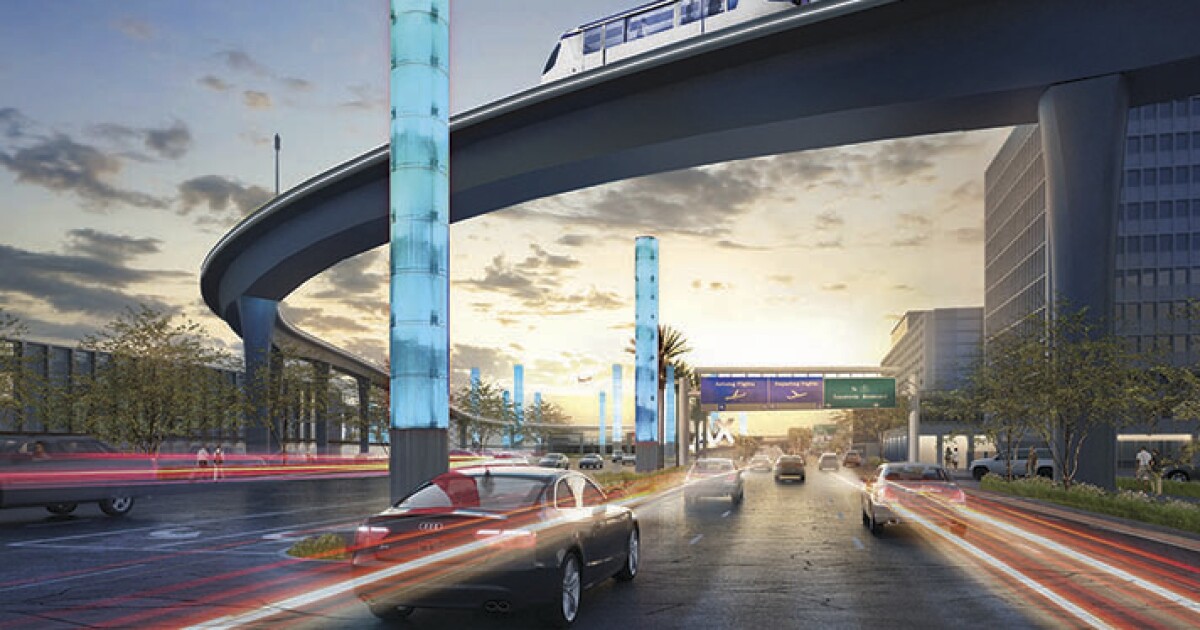Airports finances in good shape as hammers start to fly
3 min read

Fitch Ratings says U.S. airports are moving ahead with tens of billions of dollars in capital projects now that passenger traffic has fully recovered to pre-pandemic levels.
More than half of the 30 or so large hub airports in the U.S. have come to market in the last nine months, presenting Fitch Ratings with the opportunity to do a deep dive on the credits it rates, said Seth Lehman, a Fitch senior director.
The top five big spenders, given capital program estimates for the next 10 years, are: Los Angeles International Airport, $12.1 billion; Chicago O’Hare International Airport, $12 billion; San Francisco International Airport, $11 billion, Hartsfield–Jackson Atlanta International Airport, $10.6 billion and Dallas/Fort Worth International Airport, $9.2 billion.
OLEK
The airport sector, overall, has a stable outlook from Fitch. A few airports have a positive outlook, but none of the major airports currently have a negative outlook, Lehman said.
“We aren’t signaling with the report that the capital programs could have a negative effect on the ratings,” Lehman said. “We are modeling the debt and their ability to support it, and what we are seeing is that the airports have the ability to raise prices and have cash flows keep up with costs.”
Fitch analysts do tend to worry that if there is an economic set back, or an airline faces turbulence, that the airport is already committed to this spending, Lehman said.
The airlines, and therefore the airports, were in bad shape ahead of the 2008 crash, but that is not the case today, he said.
The airports are not signaling with their capital program estimates that they are anticipating higher costs resulting from labor shortages or increased construction material costs, but rather the airports are sending a “message that they are committed to doing large works, particularly terminal improvements,” Lehman said.
But there are exceptions, and Portland International Airport in Oregon is one of them.
Portland had to “raise their estimates based on price increases in the proposals they were receiving from contractors,” Lehman said. “But when San Francisco International Airport or Los Angeles International Airport comes with a $10 billion capital program, it’s more they are doing estimates of what the whole set of programs will cost, not saying there was an increase in material costs from a year ago.”
While much depends on local conditions, in terms of available labor and the supply chain for materials, the federal infrastructure bill will help, because it means airports will not have to rely on as much borrowing or cash flow with the federal government as a partner, he said.
The airports are being mindful of construction inflation as they cost out their programs, Lehman said.
They are paying attention to how costs are trending — and whether they will have the cash flow from new contracts to cover those costs, he said.
“Airports are very capital intensive enterprises,” Lehman said. “The capital projects are not just for expansions, but they could be renewing facilities, because some are decades old.”
Though the airports across-the-board have experienced growth surpassing 2019 levels by 3%, not all are faring as well.
“There are still a number of airports a little behind compared to pre-pandemic levels,” Lehman said. “In late 2023, some still have a fair amount of catching up to do, compared to 2019.”
The laggards include San Francisco International Airport, Los Angeles International Airport, Philadelphia International Airport, Chicago O’Hare International Airport and Detroit Metro Airport.
In California, where SFO is still down 10.5% from 2019 levels and LAX is down 16.7% compared to pre-pandemic numbers, it’s from a dependence on flights from Asian countries, where international travel has not recovered. For the other three, the airlines may not have restored all the flights they had pre-pandemic, it’s not necessarily anything indicative of the local economies, Lehman said.
Looking forward, Fitch expects intermediate growth for overall airline traffic will level off at 2%, matching anticipated U.S. economic growth, he said.
The major airports in Charlotte, Dallas-Fort Worth and Miami are among those performing above average, according to Fitch.
“What we are hearing is that the airlines have been more aggressive in their networks in those regions,” Lehman said. “They are hub airports, so they get a lot of connecting flights.”





